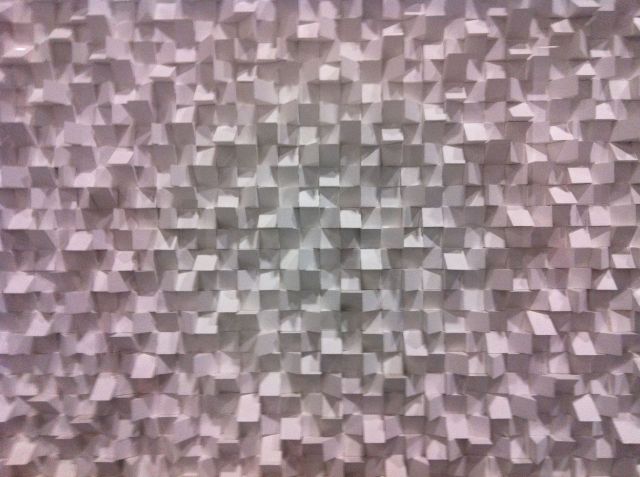A few weeks ago, I attended an art exhibit called Dynamo, at the Grand Palais in Paris. It was a delightfully mathy exhibit featuring optical and kinetic artists from around the world. I don’t know about you, but I really like finding math in unconventional places. A great place for sharing some of that is the MAA Found Math Gallery, to which I have contributed a couple of times. Ivars Peterson’s blog, The Mathematical Tourist, also features many examples of found math. For this post, I wanted to share some of my photos from the exhibit: the ones I found the most mathy and intriguing, of course!

“Chromosaturation”, by Carlos Cruz Diez. Slightly less mathy but by a Venezuelan artist, so I though I would include it.

The positioning of the fans held the circle of tape floating in the air. I thought this was amazing in terms of physics!





Great to see mathy art, but one minor quibble: The largest of the blue objects in the “platonic solids” pictures isn’t a Platonic solid. Note that 6 triangles meet at a point. If they were equilateral, that would make the total 360 degrees. So, the triangles aren’t equilateral, hence not Platonic solids.
Nice catch, thanks!